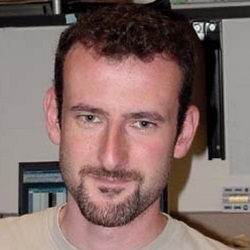Plenary 1: Medical Imaging/Clinical Applications
Sunday, April 5, 17:30 - 18:30
Michael D. Feldman, University of Pennsylvania
Whole slide imaging meets AI/ML, a pathologists view from the trenches

Anant Madabhushi, Case Western Reserve University
Artificial Intelligence and Computational Pathology: Implications for Precision Medicine
Abstract: With the advent of digital pathology, there is an opportunity to develop computerized image analysis methods to not just detect and diagnose disease from histopathology tissue sections, but to also attempt to predict risk of recurrence, predict disease aggressiveness and long term survival. At the Center for Computational Imaging and Personalized Diagnostics, our team has been developing a suite of image processing and computer vision tools, specifically designed to predict disease progression and response to therapy via the extraction and analysis of image-based “histological biomarkers” derived from digitized tissue biopsy specimens. These tools would serve as an attractive alternative to molecular based assays, which attempt to perform the same predictions. The fundamental hypotheses underlying our work are that: 1) the genomic expressions detected by molecular assays manifest as unique phenotypic alterations (i.e. histological biomarkers) visible in the tissue; 2) these histological biomarkers contain information necessary to predict disease progression and response to therapy; and 3) sophisticated computer vision algorithms are integral to the successful identification and extraction of these biomarkers. We have developed and applied these prognostic tools in the context of several different disease domains including ER+ breast cancer, prostate cancer, Her2+ breast cancer, ovarian cancer, and more recently medulloblastomas. For the purposes of this talk I will focus on our work in breast, prostate, rectal, oropharyngeal, and lung cancer.

Plenary 2: Pushing limits: Microscopy, Computational Image Reconstruction, Bioimaging
Monday, April 6, 17:30 - 18:30
Rebecca Willett, University of Chicago
Learning to Solve Inverse Problems in Imaging
Abstract: Many challenging image processing tasks can be described by an ill-posed linear inverse problem: deblurring, deconvolution, tomographic reconstruction, MRI reconstruction, inpainting, compressed sensing, and superresolution all lie in this framework. Traditional inverse problem solvers minimize a cost function consisting of a data-fit term, which measures how well an image matches the observations, and a regularizer, which reflects prior knowledge and promotes images with desirable properties like smoothness. Recent advances in machine learning and image processing have illustrated that it is often possible to learn a regularizer from training data that can outperform more traditional regularizers. Recent advances in machine learning have illustrated that it is often possible to learn a regularizer from training data that can outperform more traditional regularizers. In this talk, I will describe various classes of approaches to learned regularization, ranging from generative models to unrolled optimization perspectives, and explore their relative merits and sample complexities. We will also explore the difficulty of the underlying optimization task and how learned regularizers relate to oracle estimators.

Willy Supatto, Ecole Polytechnique
Motile cilia and left-right symmetry breaking: from images to biological insights
Abstract: In vertebrate embryos, cilia-driven fluid flows generated within the left-right organizer (LRO) are guiding the establishment of the left-right body asymmetry. To study such complex and dynamic biomechanical process and to investigate the generation and sensing of biological flows, it is required to quantify biophysical features of motile cilia in 3D and in vivo. In the zebrafish embryo, the LRO is called the Kupffer’s vesicle and is a spheroid shape cavity, which is covered with motile cilia oriented in all directions of space. This dynamic and transient structure varies in size and shape during development and from one embryo to the other. In addition, micrometric size cilia are beating too fast and are located too deep inside the embryo to be able to image their 3D motion pattern using fluorescence microscopy. As a consequence, the experimental investigation of motile cilia properties is challenging. In this talk, we will present how we circumvented these limitations by combining live 3D imaging using multiphoton microscopy and image registration, processing and analysis. We quantified cilia biophysical features, such as density, motility, 3D orientation, beating frequency, or length without resolving their motion. We combined the results from different embryos in order to perform statistical analyses and compare experimental conditions. We integrated such experimental features obtained in vivo into a fluid dynamics model and a multiscale physical study of flow generation and detection. Finally, this strategy enabled us to demonstrate how cilia orientation pattern generate the asymmetric flow within the LRO. In addition, we investigated the physical limits of flow detection to clarify which mechanisms could be reliably used for body axis symmetry breaking. We also identified a novel type of asymmetry in the left-right organizer. Together, this work based on quantitative image analysis of motile cilia sheds light on the complexity of left-right symmetry breaking and chirality genesis in developing tissues.

